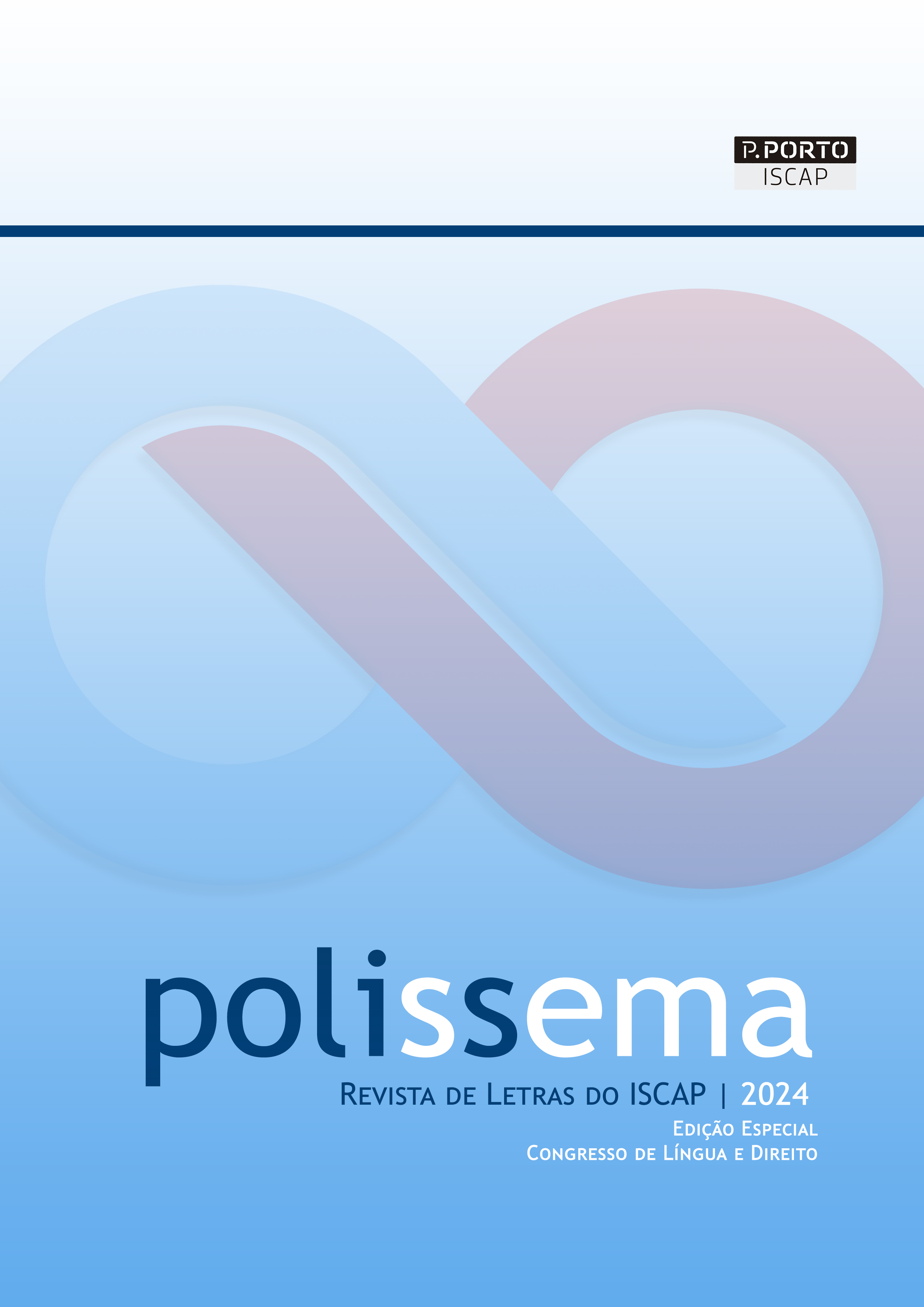(NON-)INCLUSIVE LANGUAGE IN THE SPANISH CRIMINAL CODE. ANALYSIS AND PROPOSAL
DOI:
https://doi.org/10.34630/polissema.vi.5581Keywords:
inclusive language, gender-marked legal lexicon, gender-neutral legal lexicon, Spanish Criminal CodeAbstract
Inclusive language is the type of language that uses a range of grammatically sound formulae to encourage a vision of the world in which both women and men are included in order to overcome linguistic sexism and androcentrism. The consistent use of inclusive language de-masculinises job-market realities that have traditionally been dominated by males, as is the case of the legal professions. In Spain, the legal field has changed drastically in the last decades, to the extent that more than half of the judges and magistrates in the country are female. Despite that, the legal codes on which sentences are based have not evolved with regard to the use of inclusive language. This paper presents the results of the systematic analysis of gender-marked lexicon in the Spanish Criminal Code (1995, last modified 2023). The quantitative and qualitative analysis of the Code allows us to draw some conclusions regarding a) the overwhelming presence of non-inclusive or gender-biased terms, and b) the frequency of use of each of those terms and its implications. The data obtained indicate that the Spanish Criminal Code is biased for gender inasmuch as it resorts to masculine forms in almost 100% of the cases. As a feasible alternative, this article introduces some language suggestions to make the Criminal Code more neutral and inclusive.
References
Anthony, L. (2023). AntConc (4.2.4) [Computer programme]. Waseda University. http://www.antlab.sci.waseda.ac.jp/
Bosque, I. (2018). Glosario de términos gramaticales. Ediciones de la Universidad de Salamanca.
Bourdieu, P. (1991). Language and symbolic power. Polity Press.
Bringas López, A., Castro Vázquez, O., Fariña Busto, M. J., Martín Lucas, B., & Suárez Briones, B. (2012). Manual de linguaxe inclusiva no ámbito universitario. Unidade de Igualdade da Universidade de Vigo. https://www.uvigo.gal/sites/default/uvigo/DOCUMENTOS/igualdade/Manualcon_portada_para_web.pdf
Código Penal. Ley Orgánica 10/1995. 23 November 1995 [modified 2023] (Spain).
Giammatteo, M. (2021). El género gramatical en español y la disputa por el género. Cuarenta naipes, 0(3), 177-198. https://fh.mdp.edu.ar/revistas/index.php/cuarentanaipes/article/view/4885
Harris, J. W. (1991). The Exponence of Gender in Spanish. Linguistic Inquiry, 22(1), 27–62. http://www.jstor.org/stable/4178707
La Justicia en datos (2023). https://datos.justicia.es/jueces-y-juezas-en-activo
Neoh, M. J. Y., Bizzego, A., Teng, J. H., Gabrieli, G., Esposito, G. (2023). Neural Processing of Sexist Comments: Associations between Perceptions of Sexism and Prefrontal Activity. Brain Sciences 13, 529. https://doi.org/10.3390/brainsci13040529
Organic Law 3/2007. (2007). On the effective equality between women and men. BOE n. 71, 23 March 2007. http://www.boe.es/boe_gallego/dias/2007/03/29/pdfs/A01203-01234.pdf
Report on non-sexist Language in the European Parliament. (2008). http://lenguajeadministrativo.files.wordpress.com/2011/01/informe-sobre-el-lenguaje-no-sexista-pe-i.pdf
Simone, R. (2001). Fundamentos de lingüística. Ariel.
Downloads
Published
How to Cite
Issue
Section
License
Copyright (c) 2024 POLISSEMA – ISCAP Journal of Letters

This work is licensed under a Creative Commons Attribution-NonCommercial-NoDerivatives 4.0 International License.


